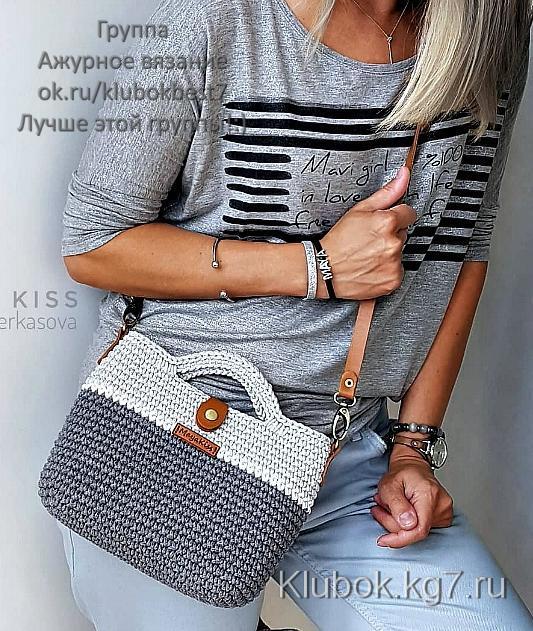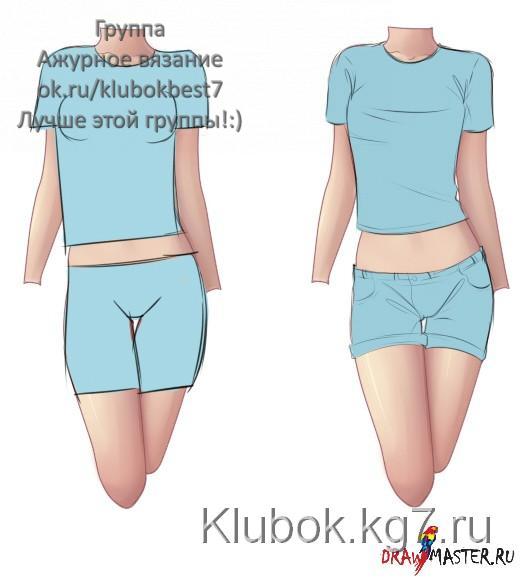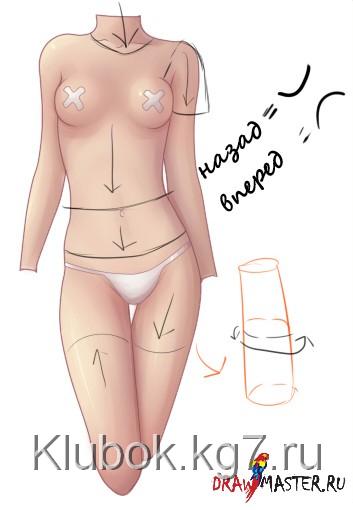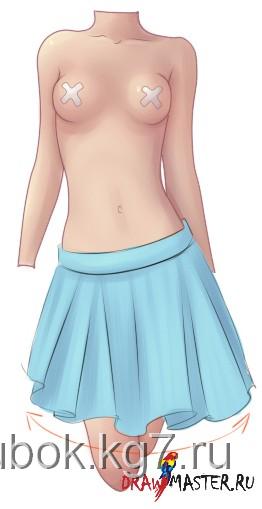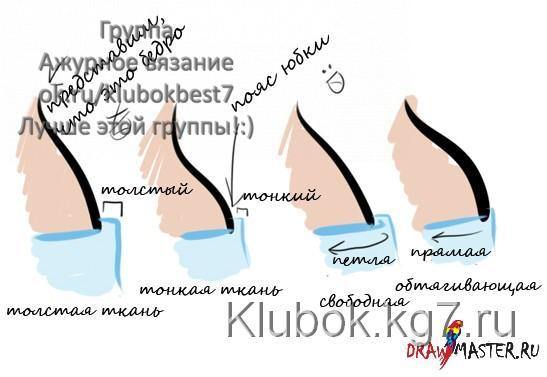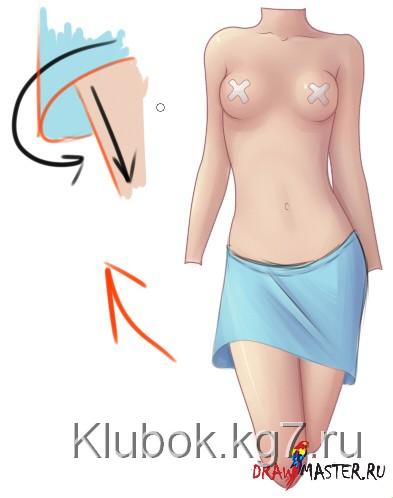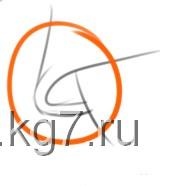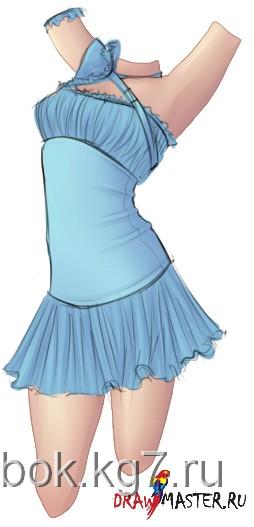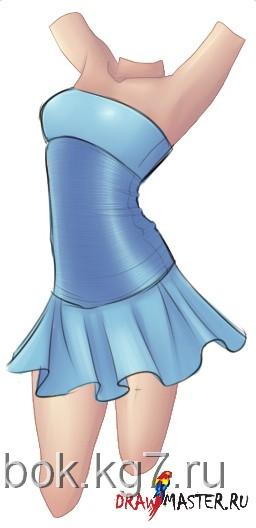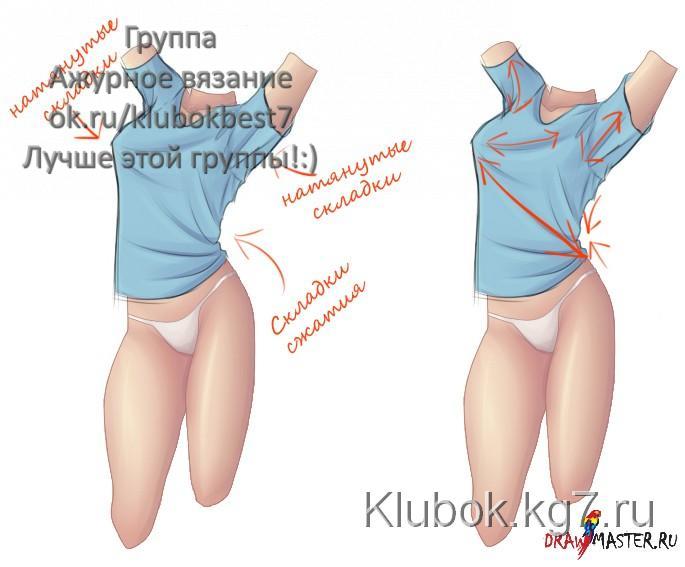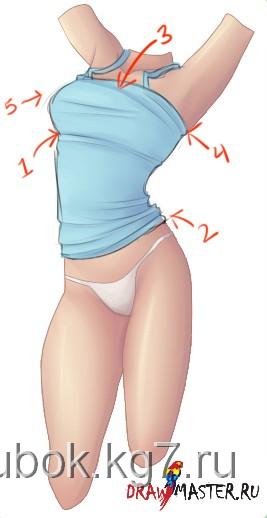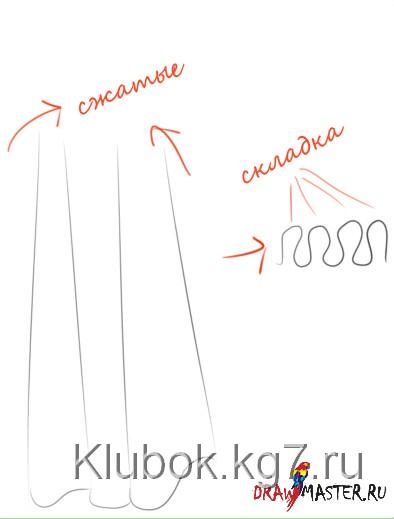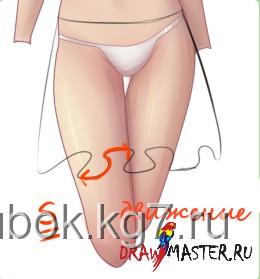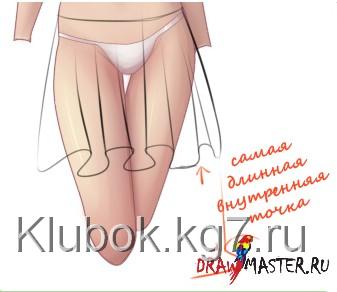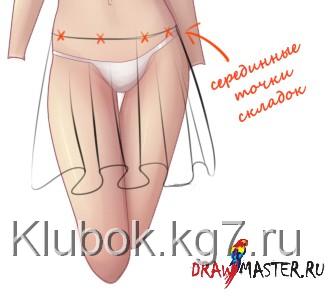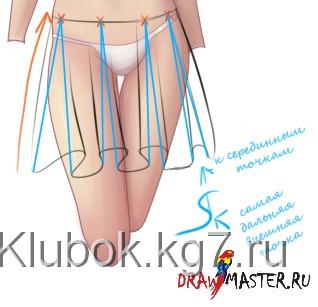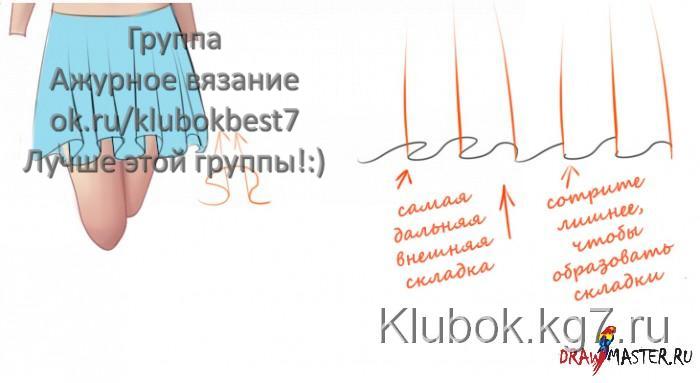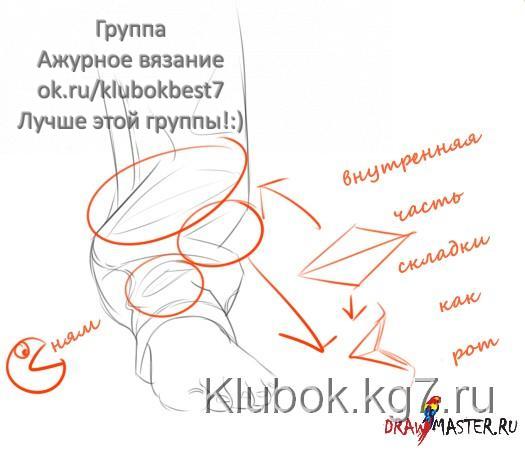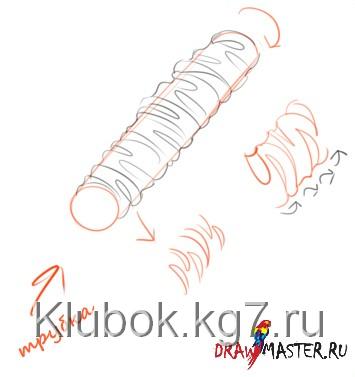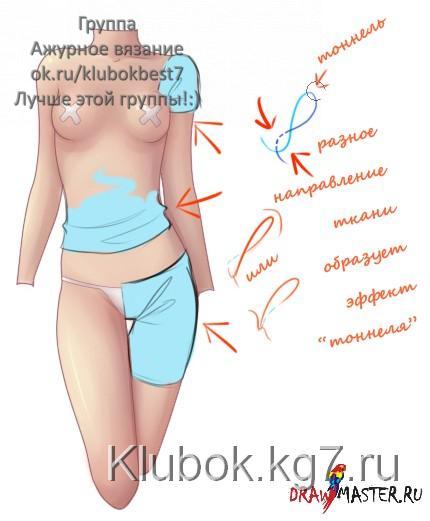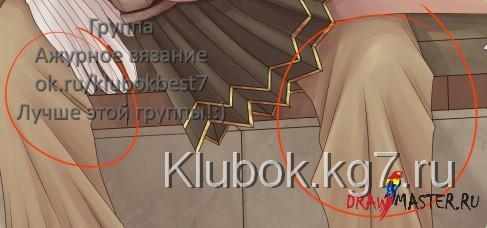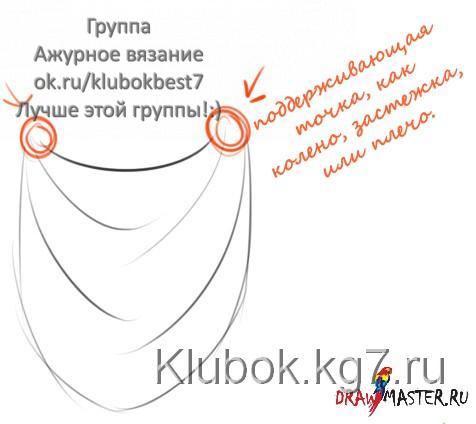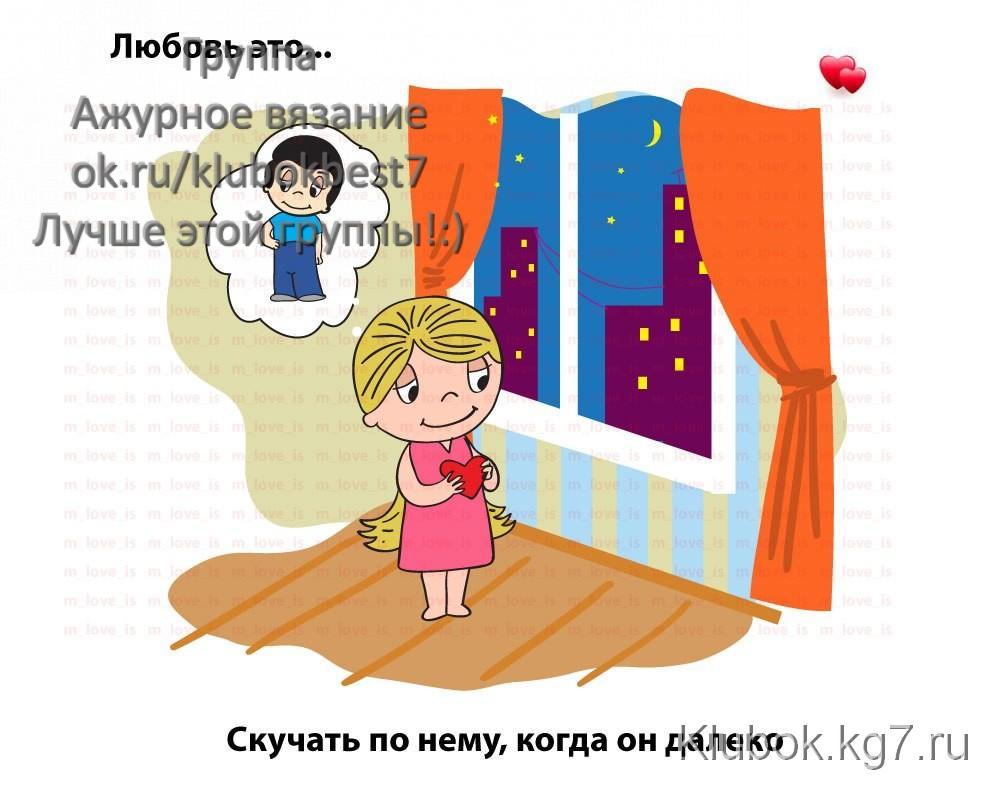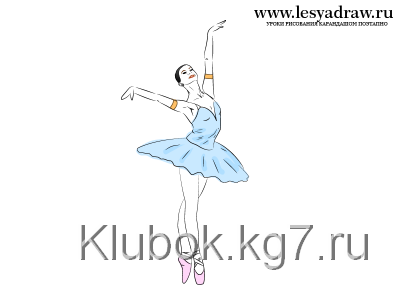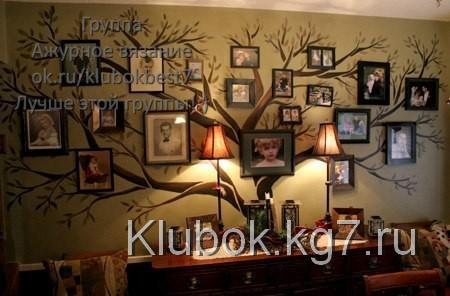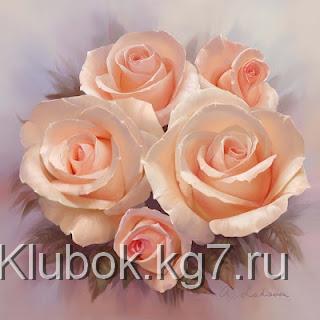Как нарисовать Одежду и Складки - Часть 1
Добавлено: 04.04.2015 в 14:59 Просмотров: 65575
Как нарисовать Одежду и Складки - Часть 1Klubokhttp://klubok.work/14/83/5753/Klubokhttps://klubok.kg7.ru/css/image/top-logo.png
Первым делом, давайте поговорим о
строении человеческого тела. Человеческое тело не плоское, следовательно, одежда
на нем тоже не должны быть плоской. Вроде и так логично, но сколько раз вы
видели одежду, нарисованную вот так?
Обратите внимание на рисунок слева. Что-то здесь не так,
правда? Это потому что одежда была нарисована без учета формы тела. А если
перевести картинку в компьютерную графику? Не знаете как, потому что неправильно
раскрасили рисунок... ну, а что, если бы единственная ваша проблема заключалась
в одежде, которую вы рисуете? Если нет форм, то откуда взяться теням?
Вот-вот.
Теперь взгляните на
рисунок справа. Обратите внимание, как одежда сидит на теле. Изгибы одежды
показывают форму тела, скрытую под ней. Складки используются для передачи объема
и движения. Преобразование одежды на этом рисунке в компьютерную графику было бы
намного легче.
Об этом и будет
данный урок. Форма, складки, и приемы, с помощью которых вы научитесь правильно
подбирать для своих персонажей одежду.
Итак, начнем с кромки. Что такое кромка? Кромка – это край
одежды, который соприкасается с кожей. Например, на рисунках выше кромка есть на
воротнике, на нижней части рукавов, на талии шортов, и на ногах, где шорты
касаются бедер. Кромки никогда не должны быть прямыми линиями, потому что они
обводят тело по кругу (руки, шею, ноги, живот), а части тела объемные. У них
есть масса, и они имеют округлую форму – так что кромки одежды тоже должны быть
округлыми.
Направление линий
кромки зависит от направление части тела, которую они обхватывают, и от того,
как падает ткань.
Если вы уже закончили разглядывать мою полу-обнаженную
модель, обратите внимание на линию изгиба кромки. Чтобы правильно нарисовать
линию кромки, нужно уметь видеть форму части тела под одеждой. Посмотрите,
например, на ее ноги. Видите цилиндр рядом? Представим, что ее нога – это
цилиндр. Посмотрите, как линия идет вокруг него. Есть один приемчик, который
поможет вам запомнить то, как должна идти линия кромки: разбейте тело на части.
Если нижняя половина части тела, которую обрамляет кромка одежды, ближе к
камере, чем верхняя половина, то линия должна подниматься, как радуга. Если
нижняя часть тела расположена дальше от камеры, чем верхняя ее часть, то линия
кромки должны прогибаться вниз, как старый канатный мостик. Если часть тела
стоит прямо перпендикулярно поверхности земли, то линия все-равно всегда будет
прогибаться чуть-чуть вниз, потому что ткань провисает под собственной тяжестью.
Чем дальше или ближе по отношению к центральной оси расположены те или иные
части тела, тем более выраженной будет линия кромки. Посмотрите еще раз на мой
рисунок выше: линия кромки на ногах намного более выраженная, чем линии на
животе.
Даже на не прямых кромках линия все равно будет подчиняться
этому закону.
Еще одна очень
важная вещь, которую надо знать о кромке, это то, как она обхватывает тело.
Посмотрите на эти примеры.
Это применимо к воротникам, поясам, верхней части ботинок,
носков … ко всему, что обхватывает какую-либо часть тела и касается кожи, кроме
тех случаев, когда кромка идет прямой линией от тела (в таком случае будет видна
только ткань, обхватывающая тело, если смотреть снизу). Мы к этому еще вернемся.
Обратите внимание на рисунок выше. На первом рисунке край кромки довольно далеко
расположен от кожи, а на втором изображении она значительно ближе. В зависимости
от ширины «выступа», можно добиться иллюзии толщины ткани. Чем толще «выступ»,
тем толще ткань. В третьем и четвертом примерах вы увидите разницу между
свободной и облегающей одеждой. Свободная ткань (пример третий) будет немного
отступать от кожи. Обратите внимание на «петлю». Маленький крючок на конце нашей
кромке изменяет толщину ткани, отодвинув ее наружу от кожи, создавая ощущение
того, что ткань сидит на теле свободно. На четвертом примере петля отсутствует
(мы полагаем, это потому что кромка одежды плотно облегает талию), показывая,
что ткань плотно прилегает к коже.
Это очень мелкая деталь, едва ли заметная, но эта небольшая
зона, где кромка одежды соприкасается с кожей, говорит нам многое об одежде
нашего персонажа (даже, если мы этого не осознаем!).
Итак, теперь давайте вернемся к тому, о чем я говорила
ранее, просматривая шов с внутренней стороны.
Также как и петля, показанная на примере выше, и
показывающая, как свободно одежда может сидеть, если смотреть на кромку одежды
снизу (как на этом примере), шов будет полностью загибаться вокруг тела к задней
части персонажа. Идем дальше, юбка сшита из очень тонкой ткани, именно поэтому
линия соприкасается с боковой линией, идущей вниз. Если вы хотели показать
толщину ткани, следовало бы нарисовать как-то так:
Обратите внимание на небольшое наложение на краю юбки и то,
как оно закругляется в сторону тела, таким образом, показывая толщину ткани, из
которой выполнена одежда.
Теперь, прежде чем окунуться в подробности складок, давайте
немного поговорим о материалах. Верите или нет, но материал, из которого сделана
ваша одежда, очень сильно влияет на форму образующихся на ней складок. Например,
шерсть особо не формирует складки, а если и образует, то они получаются очень
аккуратно закругленными и длинными. Атлас очень легко образует складки, но из-за
его шелковой текстуры он также легко и быстро разглаживается. Когда на нем все
же образовываются складки, они обычно получаются длинными, широкими с очень
плавными красивыми изгибами. Лен также легко создает и сохраняет складки,
поэтому на нем образуется больше складок, чем на других тканях. Вельвет очень
похож по своим свойствам на шерсть, образует очень острые складки, но довольно
редко. Очень важно понимать, из какого материала сделана одежда вашего
персонажа, чтобы правильно ее передать на рисунке. Сейчас не представляет
никакого труда погуглить и найти множество видов тканей, чтобы изучить их
поведение, и я очень советую этим заняться в ближайшее время. Но для особо
ленивых… представляю вам шпаргалку:
+ Тонкость и Толщина:
Тонкие материалы будут образовывать складки намного проще, чем толстые. Складки
будут располагаться ближе друг к другу и их будет очень много.
+
Шелковистость и Грубость: Шелковые материалы не так легко образуют
складки, в отличие от грубых материалов, но сами по себе будут чаще их
образовывать, чем грубые ткани.
+ Мягкость и
Твердость: Чем мягче материал, тем округлее будут получаться складки, и
тем более равномерно удалены они будут друг от друга. Чем тверже материал, тем
меньше складок на нем будет образовываться, и они будут крупными, широкими.
+
Текучесть и Жесткость: Текучие материалы, такие как шелк, будут
образовывать длинные, арочные складки, но изгибов будет очень немного, а сами
складки будут едва удалены друг от друга. Жесткие материалы не драпируются, они
образуют угловатые скомканные «мятые складки», или скорее разветвляются, нежели
образовывают складки. Жесткие ткани, такие как муслин или джутовые мешочные
ткани, будут легко изгибаться, как мелкими, так и крупными шаблонами, а складки
будут очень широкими и угловатыми.
К примеру, посмотрите на картинку выше. Обратите внимание
на то, как частота, расстояние, и арки на складках говорят о типе ткани, из
которой сшита одежда персонажа.
Ее лиф, кажется, выполнен из тонкой ткани, вроде льна,
потому что складок очень много, и они разной толщины, и, несмотря на изгибы,
складки имеют странные острые концы. Нет петлеобразных складок.
С другой стороны, талия платья,
кажется, выполнена из более толстой, мягкой ткани, возможно, хлопка. Это потому
что складок очень мало, в виде трубочек, и довольно одинаково удалены друг от
друга.
Ее юбка очень похожа на
льняной лиф, образует закругленные складки. Это напоминает мягкую тюль, потому
что драпировка очень округлая, и выравнивается на концах.
Полу-балеро на ее шее (хоть его и
плохо видно на этом примере), похоже, выполнено из кожи. Складки отсутствуют,
вместо этого материал «огибает» подмышку и охватывает, как петля, плечо. Мы
можем только предположить, что какой-то идиот (DarlingMionette… кхм) потратил
свое время на то, чтобы приделать к этому изделию рюши.
Двигаемся дальше.
Если изменить складки, изменится весь внешний вид.
Верхняя часть платья напоминает
латекс, или винил. Нет никаких складок, края аккуратно закруглены.
Ткань, из которой выполнена
средняя часть платья, похожа на шелк. Немного складок, но они разной толщины и
расположены близко друг к другу.
Юбка в данном случае однозначно выполнена из плотного
хлопка. Обратите внимание на большие складки, которые неохотно изгибаются.
Теперь, скажу еще раз, не
забывайте, что не только тип материала влияет на складки, как я говорила выше,
но также и то, как свободно или плотно ткань сидит на теле и, конечно же,
движения тела в этой одежде.
Давайте перейдем к основному принципу формирования складок,
и поговорим о том, как использовать их лучшим образом.
Натянутость и
Сжатость
Большинство складок образуются либо при натяжении, либо при
сжатии ткани.
Обратите
внимание, как в данных примерах ткань натягивается и сжимается в соответствии с
движением тела.
Если одежда
сделана не из твердого пластика или метала, во всех местах, где тело будет
натягивать или сжимать одежду, будут образовываться складки. Эти складки вы
можете использовать для того, чтобы сделать акцент на фигуре персонажа.
Например:
1. Эта складка подчеркивает форму груди, проведя под ней
линию и образовав на конце груди плавный изгиб.
2. Складки сжатия демонстрируют подъем бедра.
3. Это плохая складка. Почему?
Она, изначально, неплохая, потому что подчеркивает верхнюю часть груди, но потом
она предательски опускается слишком низко вправо, уменьшая размер груди на 1/3.
Подобные складки могут образоваться в реальной жизни, но мы не будем рисовать их
таким образом. Эта складка должна была бы соединяться со складкой 4.
4. Данная складка правильным
образом подчеркивает верхнюю часть груди, и также демонстрирует свободный крой
верхней части топа, благодаря образованной «трубочке».
5. Короткие изгибистые линии между
вершинками ее груди демонстрируют полноту ее груди, показывая натяжение топа
между ее сосками.
Теперь
давайте рассмотрим разные «виды» складок
Трубчатые Складки
Трубчатые складки чаще всего видны на юбках или платьях
(отсюда появились и юбки в складку). Они образовываются, когда ткань сжимается
как гармошка (как балетная пачка). Складки обычно конусообразной или
цилиндрической формы. Они также могут образовываться, когда ткань собрана и
растянута между двумя точками.
Самый простой способ нарисовать трубчатые складки на юбке
или платье – это начать с нижней части. Нарисуйте кромку, используя S-образные
движения (см. пример выше). Сформируйте подобие гармошки из ткани.
От самой длинной внутренней точки каждой складки пририсуйте
линию к талии. Не бойтесь рисовать ваши внешние складки в одном или другом
направлении, чтобы показать движение ткани. Будет очень скучно, если все складки
будут идти вверх прямыми линиями.
Затем отметьте серединные точки каждой складки на талии.
Потом можно соединить самую длинную внешнюю точку на самой
нижней части складок (гармошки) с серединной точкой, чтобы сформировать
внутреннюю часть каждой складки.
Нажмите на картинку, чтобы посмотреть
изображение в полном размере и 100% качестве.
У вас получится что-то в этом роде
– симпатичная юбка с трубчатыми складками. Вы можете подкорректировать высоту
S-образных складок, чтобы изменить их внешний вид. Если вы хотите изменить
направление трубчатых складок (так, будто вы смотрите на них сверху), проведите
линию от самой длинной внешней точки S-образной кривой вместо самой длинной
внутренней точки.
Зигзагообразные Складки (ОМГ, я их
ненавижу)
Зигзагообразные складки (для меня) являются самым сложным
на свете элементом для рисования. Они у меня никогда не получаются нормально, но
для этого урока я постараюсь. Зигзагообразные складки появляются, когда ткань,
свернутая в трубку (штанина или рукав, например), сжимается, образовывая, таким
образом, внешние складки. Эти виды складок могут образоваться, скорее, на
жестких тканях.
Самое распространенное место, где можно наблюдать
зигзагообразные складки, это джинсы (обычно, возле щиколотки или колена), где
ткань сжимается от изгибов тела под ней.
Обратите внимание, как в этом примере зигзагообразная
складка образовалась, потому что ткань сама по себе сложилась в виде рта пакмана
(Pacman). Эти складки обычно имеют форму алмазной огранки.
Такие складки можно также увидеть
вокруг локтя.
Спиралевидные Складки
Похожи на зигзагообразные складки. На более мягкой ткани
зигзагообразная складка будет сжиматься в более округлую форму (как на рукавах),
образовывая «трубки» из ткани.
Рисовать спиралевидные складки намного проще, чем
зигзагообразная. Просто создайте полоски как на теле зебры (как на рисунке под
трубкой), и затем дорисуйте внешние скобочки (крайний правый рисунок на
картинке).
Эти складки хорошо
смотрятся на локтевой зоне рукавов, и в виде оборки по кромке блузки.
Изменив направление петлевых
складок, вы можете изменить направление спиралей.
Полузамкнутые (Крюкообразные)
Складки
Полузамкнутые или Крюкообразные складки очень часто
встречаются, их можно увидеть практически везде. Они образовываются в тех
мечтах, где ткань резко меняет свое направление. Их часто можно увидеть вокруг
подмышек, локтей, и коленей, но они могут быть и в других местах.
В своем последнем проекте, который я выполняла для одного
заказчика, я использовала полузамкнутые/крюкообразные складки вокруг колен. На
рисунке выше хорошо видно, как выглядят полузамкнутые/крюкообразные складки со
стороны.
Обратите внимание на
то, как направление между областями ткани образуют подобие «туннелей» -
внутреннюю часть полузамкнутых/крюкообразных складок.
Их образование очень напоминает
образование Спиралевидных и Зигзаговидных складок.
Ромбовидные/Драпировочные Складки
Ромбовидные или Драпировочные
складки, с другой стороны, образуются, когда ткань «провисает» между двумя
поддерживающими точками. Такие складки часто видны в зоне декольте, на мантиях,
и в промежутке между коленами, когда человек сидит в длинной юбке.
Обратите внимание на то, как «прогибается» между двумя
поддерживающими точками (например, коленями, застежками и
плечами).
Первым делом, давайте поговорим о строении человеческого тела. Человеческое тело не плоское, следовательно, одежда на нем тоже не должны быть плоской. Вроде и так логично, но сколько раз вы видели одежду, нарисованную вот так?
Обратите внимание на рисунок слева. Что-то здесь не так, правда? Это потому что одежда была нарисована без учета формы тела. А если перевести картинку в компьютерную графику? Не знаете как, потому что неправильно раскрасили рисунок... ну, а что, если бы единственная ваша проблема заключалась в одежде, которую вы рисуете? Если нет форм, то откуда взяться теням? Вот-вот.
Теперь взгляните на рисунок справа. Обратите внимание, как одежда сидит на теле. Изгибы одежды показывают форму тела, скрытую под ней. Складки используются для передачи объема и движения. Преобразование одежды на этом рисунке в компьютерную графику было бы намного легче.
Об этом и будет данный урок. Форма, складки, и приемы, с помощью которых вы научитесь правильно подбирать для своих персонажей одежду.
Итак, начнем с кромки. Что такое кромка? Кромка – это край одежды, который соприкасается с кожей. Например, на рисунках выше кромка есть на воротнике, на нижней части рукавов, на талии шортов, и на ногах, где шорты касаются бедер. Кромки никогда не должны быть прямыми линиями, потому что они обводят тело по кругу (руки, шею, ноги, живот), а части тела объемные. У них есть масса, и они имеют округлую форму – так что кромки одежды тоже должны быть округлыми.
Направление линий кромки зависит от направление части тела, которую они обхватывают, и от того, как падает ткань.
Если вы уже закончили разглядывать мою полу-обнаженную модель, обратите внимание на линию изгиба кромки. Чтобы правильно нарисовать линию кромки, нужно уметь видеть форму части тела под одеждой. Посмотрите, например, на ее ноги. Видите цилиндр рядом? Представим, что ее нога – это цилиндр. Посмотрите, как линия идет вокруг него. Есть один приемчик, который поможет вам запомнить то, как должна идти линия кромки: разбейте тело на части. Если нижняя половина части тела, которую обрамляет кромка одежды, ближе к камере, чем верхняя половина, то линия должна подниматься, как радуга. Если нижняя часть тела расположена дальше от камеры, чем верхняя ее часть, то линия кромки должны прогибаться вниз, как старый канатный мостик. Если часть тела стоит прямо перпендикулярно поверхности земли, то линия все-равно всегда будет прогибаться чуть-чуть вниз, потому что ткань провисает под собственной тяжестью. Чем дальше или ближе по отношению к центральной оси расположены те или иные части тела, тем более выраженной будет линия кромки. Посмотрите еще раз на мой рисунок выше: линия кромки на ногах намного более выраженная, чем линии на животе.
Даже на не прямых кромках линия все равно будет подчиняться этому закону.
Еще одна очень важная вещь, которую надо знать о кромке, это то, как она обхватывает тело.
Посмотрите на эти примеры.
Это применимо к воротникам, поясам, верхней части ботинок, носков … ко всему, что обхватывает какую-либо часть тела и касается кожи, кроме тех случаев, когда кромка идет прямой линией от тела (в таком случае будет видна только ткань, обхватывающая тело, если смотреть снизу). Мы к этому еще вернемся. Обратите внимание на рисунок выше. На первом рисунке край кромки довольно далеко расположен от кожи, а на втором изображении она значительно ближе. В зависимости от ширины «выступа», можно добиться иллюзии толщины ткани. Чем толще «выступ», тем толще ткань. В третьем и четвертом примерах вы увидите разницу между свободной и облегающей одеждой. Свободная ткань (пример третий) будет немного отступать от кожи. Обратите внимание на «петлю». Маленький крючок на конце нашей кромке изменяет толщину ткани, отодвинув ее наружу от кожи, создавая ощущение того, что ткань сидит на теле свободно. На четвертом примере петля отсутствует (мы полагаем, это потому что кромка одежды плотно облегает талию), показывая, что ткань плотно прилегает к коже.
Это очень мелкая деталь, едва ли заметная, но эта небольшая зона, где кромка одежды соприкасается с кожей, говорит нам многое об одежде нашего персонажа (даже, если мы этого не осознаем!).
Итак, теперь давайте вернемся к тому, о чем я говорила ранее, просматривая шов с внутренней стороны.
Также как и петля, показанная на примере выше, и показывающая, как свободно одежда может сидеть, если смотреть на кромку одежды снизу (как на этом примере), шов будет полностью загибаться вокруг тела к задней части персонажа. Идем дальше, юбка сшита из очень тонкой ткани, именно поэтому линия соприкасается с боковой линией, идущей вниз. Если вы хотели показать толщину ткани, следовало бы нарисовать как-то так:
Обратите внимание на небольшое наложение на краю юбки и то, как оно закругляется в сторону тела, таким образом, показывая толщину ткани, из которой выполнена одежда.
Теперь, прежде чем окунуться в подробности складок, давайте немного поговорим о материалах. Верите или нет, но материал, из которого сделана ваша одежда, очень сильно влияет на форму образующихся на ней складок. Например, шерсть особо не формирует складки, а если и образует, то они получаются очень аккуратно закругленными и длинными. Атлас очень легко образует складки, но из-за его шелковой текстуры он также легко и быстро разглаживается. Когда на нем все же образовываются складки, они обычно получаются длинными, широкими с очень плавными красивыми изгибами. Лен также легко создает и сохраняет складки, поэтому на нем образуется больше складок, чем на других тканях. Вельвет очень похож по своим свойствам на шерсть, образует очень острые складки, но довольно редко. Очень важно понимать, из какого материала сделана одежда вашего персонажа, чтобы правильно ее передать на рисунке. Сейчас не представляет никакого труда погуглить и найти множество видов тканей, чтобы изучить их поведение, и я очень советую этим заняться в ближайшее время. Но для особо ленивых… представляю вам шпаргалку:
+ Тонкость и Толщина: Тонкие материалы будут образовывать складки намного проще, чем толстые. Складки будут располагаться ближе друг к другу и их будет очень много.
+ Шелковистость и Грубость: Шелковые материалы не так легко образуют складки, в отличие от грубых материалов, но сами по себе будут чаще их образовывать, чем грубые ткани.
+ Мягкость и Твердость: Чем мягче материал, тем округлее будут получаться складки, и тем более равномерно удалены они будут друг от друга. Чем тверже материал, тем меньше складок на нем будет образовываться, и они будут крупными, широкими.
+ Текучесть и Жесткость: Текучие материалы, такие как шелк, будут образовывать длинные, арочные складки, но изгибов будет очень немного, а сами складки будут едва удалены друг от друга. Жесткие материалы не драпируются, они образуют угловатые скомканные «мятые складки», или скорее разветвляются, нежели образовывают складки. Жесткие ткани, такие как муслин или джутовые мешочные ткани, будут легко изгибаться, как мелкими, так и крупными шаблонами, а складки будут очень широкими и угловатыми.
К примеру, посмотрите на картинку выше. Обратите внимание на то, как частота, расстояние, и арки на складках говорят о типе ткани, из которой сшита одежда персонажа.
Ее лиф, кажется, выполнен из тонкой ткани, вроде льна, потому что складок очень много, и они разной толщины, и, несмотря на изгибы, складки имеют странные острые концы. Нет петлеобразных складок.
С другой стороны, талия платья, кажется, выполнена из более толстой, мягкой ткани, возможно, хлопка. Это потому что складок очень мало, в виде трубочек, и довольно одинаково удалены друг от друга.
Ее юбка очень похожа на льняной лиф, образует закругленные складки. Это напоминает мягкую тюль, потому что драпировка очень округлая, и выравнивается на концах.
Полу-балеро на ее шее (хоть его и плохо видно на этом примере), похоже, выполнено из кожи. Складки отсутствуют, вместо этого материал «огибает» подмышку и охватывает, как петля, плечо. Мы можем только предположить, что какой-то идиот (DarlingMionette… кхм) потратил свое время на то, чтобы приделать к этому изделию рюши.
Двигаемся дальше.
Если изменить складки, изменится весь внешний вид.
Верхняя часть платья напоминает латекс, или винил. Нет никаких складок, края аккуратно закруглены.
Ткань, из которой выполнена средняя часть платья, похожа на шелк. Немного складок, но они разной толщины и расположены близко друг к другу.
Юбка в данном случае однозначно выполнена из плотного хлопка. Обратите внимание на большие складки, которые неохотно изгибаются.
Теперь, скажу еще раз, не забывайте, что не только тип материала влияет на складки, как я говорила выше, но также и то, как свободно или плотно ткань сидит на теле и, конечно же, движения тела в этой одежде.
Давайте перейдем к основному принципу формирования складок, и поговорим о том, как использовать их лучшим образом.
Натянутость и Сжатость
Большинство складок образуются либо при натяжении, либо при сжатии ткани.
Обратите внимание, как в данных примерах ткань натягивается и сжимается в соответствии с движением тела.
Если одежда сделана не из твердого пластика или метала, во всех местах, где тело будет натягивать или сжимать одежду, будут образовываться складки. Эти складки вы можете использовать для того, чтобы сделать акцент на фигуре персонажа. Например:
1. Эта складка подчеркивает форму груди, проведя под ней линию и образовав на конце груди плавный изгиб.
2. Складки сжатия демонстрируют подъем бедра.
3. Это плохая складка. Почему? Она, изначально, неплохая, потому что подчеркивает верхнюю часть груди, но потом она предательски опускается слишком низко вправо, уменьшая размер груди на 1/3. Подобные складки могут образоваться в реальной жизни, но мы не будем рисовать их таким образом. Эта складка должна была бы соединяться со складкой 4.
4. Данная складка правильным образом подчеркивает верхнюю часть груди, и также демонстрирует свободный крой верхней части топа, благодаря образованной «трубочке».
5. Короткие изгибистые линии между вершинками ее груди демонстрируют полноту ее груди, показывая натяжение топа между ее сосками.
Теперь давайте рассмотрим разные «виды» складок
Трубчатые Складки
Трубчатые складки чаще всего видны на юбках или платьях (отсюда появились и юбки в складку). Они образовываются, когда ткань сжимается как гармошка (как балетная пачка). Складки обычно конусообразной или цилиндрической формы. Они также могут образовываться, когда ткань собрана и растянута между двумя точками.
Самый простой способ нарисовать трубчатые складки на юбке или платье – это начать с нижней части. Нарисуйте кромку, используя S-образные движения (см. пример выше). Сформируйте подобие гармошки из ткани.
От самой длинной внутренней точки каждой складки пририсуйте линию к талии. Не бойтесь рисовать ваши внешние складки в одном или другом направлении, чтобы показать движение ткани. Будет очень скучно, если все складки будут идти вверх прямыми линиями.
Затем отметьте серединные точки каждой складки на талии.
Потом можно соединить самую длинную внешнюю точку на самой нижней части складок (гармошки) с серединной точкой, чтобы сформировать внутреннюю часть каждой складки.
Нажмите на картинку, чтобы посмотреть
изображение в полном размере и 100% качестве.
У вас получится что-то в этом роде – симпатичная юбка с трубчатыми складками. Вы можете подкорректировать высоту S-образных складок, чтобы изменить их внешний вид. Если вы хотите изменить направление трубчатых складок (так, будто вы смотрите на них сверху), проведите линию от самой длинной внешней точки S-образной кривой вместо самой длинной внутренней точки.
Зигзагообразные Складки (ОМГ, я их ненавижу)
Зигзагообразные складки (для меня) являются самым сложным на свете элементом для рисования. Они у меня никогда не получаются нормально, но для этого урока я постараюсь. Зигзагообразные складки появляются, когда ткань, свернутая в трубку (штанина или рукав, например), сжимается, образовывая, таким образом, внешние складки. Эти виды складок могут образоваться, скорее, на жестких тканях.
Самое распространенное место, где можно наблюдать зигзагообразные складки, это джинсы (обычно, возле щиколотки или колена), где ткань сжимается от изгибов тела под ней.
Обратите внимание, как в этом примере зигзагообразная складка образовалась, потому что ткань сама по себе сложилась в виде рта пакмана (Pacman). Эти складки обычно имеют форму алмазной огранки.
Такие складки можно также увидеть вокруг локтя.
Спиралевидные Складки
Похожи на зигзагообразные складки. На более мягкой ткани зигзагообразная складка будет сжиматься в более округлую форму (как на рукавах), образовывая «трубки» из ткани.
Рисовать спиралевидные складки намного проще, чем зигзагообразная. Просто создайте полоски как на теле зебры (как на рисунке под трубкой), и затем дорисуйте внешние скобочки (крайний правый рисунок на картинке).
Эти складки хорошо смотрятся на локтевой зоне рукавов, и в виде оборки по кромке блузки.
Изменив направление петлевых складок, вы можете изменить направление спиралей.
Полузамкнутые (Крюкообразные) Складки
Полузамкнутые или Крюкообразные складки очень часто встречаются, их можно увидеть практически везде. Они образовываются в тех мечтах, где ткань резко меняет свое направление. Их часто можно увидеть вокруг подмышек, локтей, и коленей, но они могут быть и в других местах.
В своем последнем проекте, который я выполняла для одного заказчика, я использовала полузамкнутые/крюкообразные складки вокруг колен. На рисунке выше хорошо видно, как выглядят полузамкнутые/крюкообразные складки со стороны.
Обратите внимание на то, как направление между областями ткани образуют подобие «туннелей» - внутреннюю часть полузамкнутых/крюкообразных складок.
Их образование очень напоминает образование Спиралевидных и Зигзаговидных складок.
Ромбовидные/Драпировочные Складки
Ромбовидные или Драпировочные складки, с другой стороны, образуются, когда ткань «провисает» между двумя поддерживающими точками. Такие складки часто видны в зоне декольте, на мантиях, и в промежутке между коленами, когда человек сидит в длинной юбке.
Обратите внимание на то, как «прогибается» между двумя поддерживающими точками (например, коленями, застежками и плечами).
Рубрика: картинки






